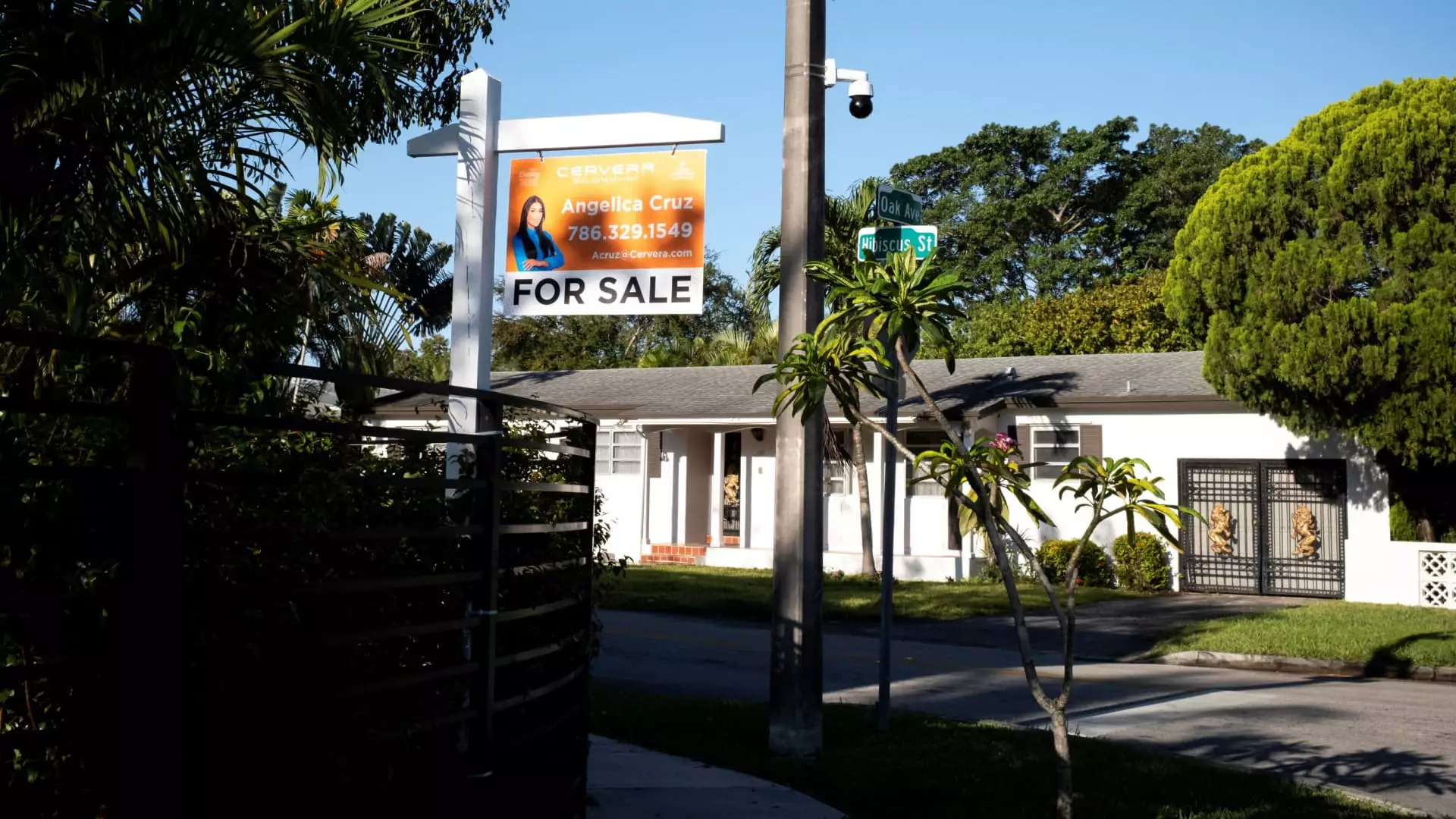The 2024 housing market finds itself mired in a perplexing situation: the combination of skyrocketing mortgage rates and unease about the economy has culminated in sales plummeting to their lowest levels in over a decade. According to the National Association of Realtors, March witnessed a staggering 5.9% decline in previously owned home sales compared to February, with total unit sales dipping to only 4.02 million. This is not merely a statistical anomaly; it marks the slowest March performance since 2009, emphasizing the gravity of the situation. With notable declines across all regions, the real estate landscape appears bleak, with the West experiencing the sharpest declines. Ultimately, these numbers reflect deeper issues in the economy that no one wants to talk about.
The Myth of the Spring Housing Surge
As we enter what is infamously termed the “spring housing market,” there is a palpable sense of disappointment. The expectations that typically buoy this season are nowhere to be found, as evidenced by a market in decline rather than one ripe for opportunity. Lawrence Yun, NAR’s chief economist, indicated that affordability challenges posed by high mortgage rates are at the core of the sluggish home-buying momentum. This isn’t merely an economic inconvenience; it signals a more significant systemic issue that hampers upward movement in the American dream of homeownership. The notion that spring automatically brings a surge in sales has been proven wrong time and again; current conditions suggest a harsh recalibration is necessary.
Pockets of Hope Amid the Doom
It’s crucial to note that while most regions are suffering, the Rocky Mountain states have shown some resilience. Job growth in these markets lends an unexpected glimmer of hope even as the national landscape looks grim. However, this must be contextualized within the broader problems at hand; seasonal gains in these areas do not substitute for the vitality of the overall market. The fact that the West is the only region that experienced a year-over-year increase – despite the broader declines – is both encouraging and disheartening, as it showcases pockets of opportunity veiled under the prevailing anxieties of economic instability.
Inventory vs. Affordability: An Irreconcilable Conflict
Amidst the doom-and-gloom narrative, there is an interesting observation: the increase in housing inventory, which was up nearly 20% year-over-year in March, appears to contradict the declining sales narrative. However, an uptick in supply does little if buyers are unable to afford the homes. With current sales reflecting a shadow of normalcy, we are witnessing an emergent scenario: higher inventory and lower sales leading to a chilling effect on prices. Yet, the data showcases that median home prices are still hovering at record highs. This paradox suggests that unless affordability becomes a key focus, inventory alone will not drive the recovery of the housing market.
Who is the Real Victim? First-time Buyers in Crisis
The impact on first-time buyers is particularly devastating. Making up only 32% of the market share in March, they have fallen well below the historical average of approximately 40%. This decline represents not just an individual’s missed opportunity for homeownership, but it raises a more profound concern regarding equity in the housing market. The stakes couldn’t be higher: if the very demographic that should ideally drive the market is sidelined, the future of our housing landscape becomes increasingly precarious.
Looking Ahead: A Foggy Outlook
The trajectory does not appear optimistic. With reports of increasing contract cancellations and the potential for worsening economic conditions, real estate analysts are bracing for more fluctuations. Robert Frick, a corporate economist with Navy Federal Credit Union, warns that “March numbers are bad, but they’re likely to get worse.” This sentiment encapsulates the pervasive anxiety surrounding the market and emphasizes the need for prudent reforms. A collective reevaluation of policies and practices is not just necessary; it’s essential for ensuring the future of homeownership remains accessible to all, not just a privileged few.
The housing market is at an inflection point, with undercurrents of economic distress suggesting that maintaining the status quo is not an option. A balanced approach, sensibly addressing affordability while carefully navigating the challenging landscape, becomes imperative in shaping the future trajectory of American real estate.

